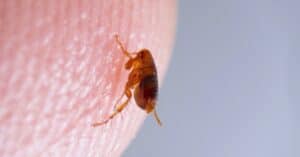Have you noticed an excessive amount of fleas in your yard? One of the most irritating animals on the planet is fleas. Not only do they infest gardens, they can bite people and domestic animals.
It can be very challenging to successfully get rid of fleas once your house or yard is contaminated.
Luckily, we have the most effective flea treatments that you may try to help keep fleas away from your pets and kill them if they are already present. Continue reading to find out how you can kick these pests to the curb!
Tips For Successful Flea Removal
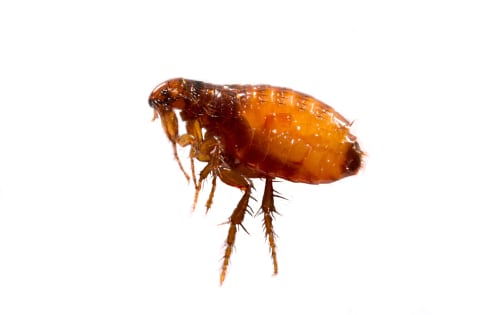
Fleas will jump from one being to another looking for their next meal.
©Vera Larina/Shutterstock.com
To start the flea treatment, you must find out where these tiny bloodsuckers are in your yard. Fleas favor warm, gloomy, and wet environments. They tend to stay away from open fields and bright sunlight.
So where do you find them?
Consider the areas where your pet regularly congregates. This is typically where you will also discover fleas. Examine the entire garden, paying special attention to places near the doghouse, patio sets, trees, and fences.
Did you know that you can wear white socks while looking for fleas to help find where they are? Since these little critters are black, they’re easy to spot against white clothing.
How To Get Rid of Fleas From Your Yard
Keep in mind that you can discover fleas in multiple spots throughout your property. Because of this, you’ll have to use a chosen method in each of these locations to get rid of a flea infestation.
There are various ways to accomplish this, some of which are more suitable than others. The approaches outlined below are all very successful and practical ways to do the task, but you must choose the one that best suits your own requirements.
1. Spray Insecticides

Some insecticides are safe to use both indoors and outdoors.
©Andrey_Popov/Shutterstock.com
Try to find an environmentally friendly treatment if you intend to use insecticides to eradicate your flea infestation. If you have pets, it’s important to get one that is safe to use around them. Keep in mind to properly follow the directions and to avoid misting areas near wetlands, streams, or other locations where the water may be contaminated.
Wearing protective gear and a mask are also important precautions to keep you safe. Remove any toys in the yard and other items that could come into proximity to your kids or animals before you begin treating the yard with insecticides.
Rope off the area once you’ve done this treatment to ensure kids and animals steer clear.
2. Flooding Your Yard

Luckily, fleas can’t swim.
©iStock.com/MaYcaL
Waterlogged grass is inhospitable to flea larvae and eggs. Consequently, frequently flooding every inch of the yard is the simplest way to break the aggressive flea’s life cycle. In addition to destroying the fleas, the water itself will remove any of the adult fleas’ feces.
Young fleas survive off of feces, so flooding the yard helps kill them off. If you live in a particularly rainy area, such as Seattle, normal rainfall should do the job for you. If you live somewhere where the weather is usually hot and sunny, you must frequently flood the lawn, mow the grass short, and eliminate junk in your yard in order to clear the area of fleas and stop them from multiplying.
Make sure to thoroughly wet the area, paying specific attention to the areas around trees, fences, patio furniture, and anywhere your pets frequent. To ensure that the larva and flea egg is coated in water, the entire grassy area of the lawn should be somewhat wet.
3. Let Nematodes Do It For You
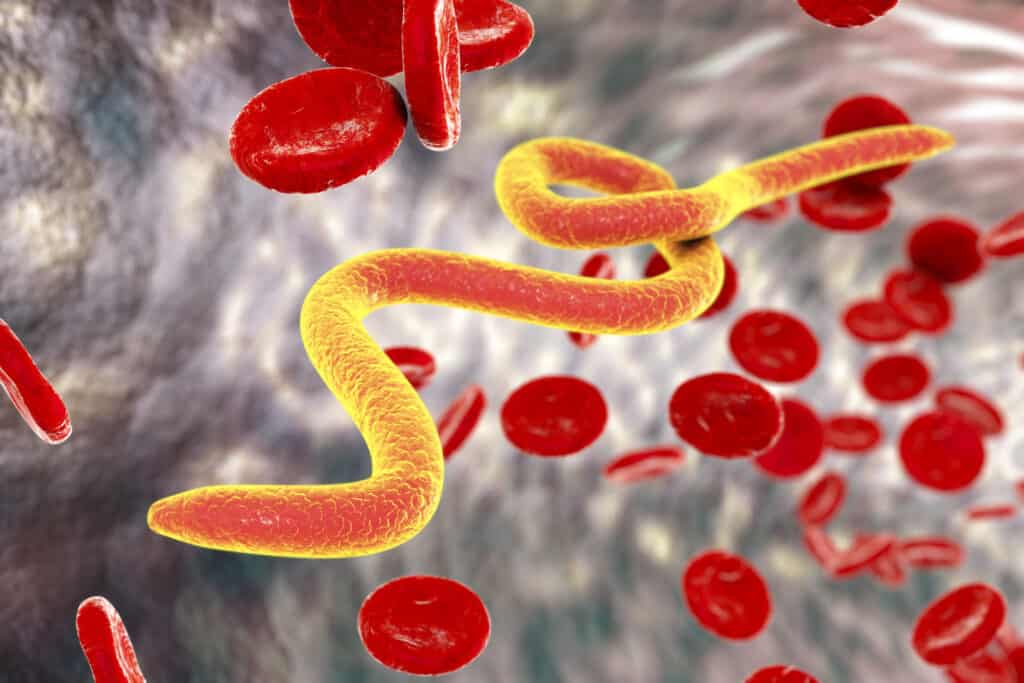
Ringworm is a type of Nematode.
©Kateryna Kon/Shutterstock.com
Nematodes can be the ideal choice for you if you need an approach that is more organic. These are tiny worms that consume termites and other pests in the garden, as well as flea larvae.
You don’t need to be concerned about anything because the nematodes are absolutely safe for people, animals, plants, trees, and your yard. They are applied straight to the flea-infested areas, ideally in shade because nematodes don’t fare well in the intense sun.
4. Keep Your Yard Maintained
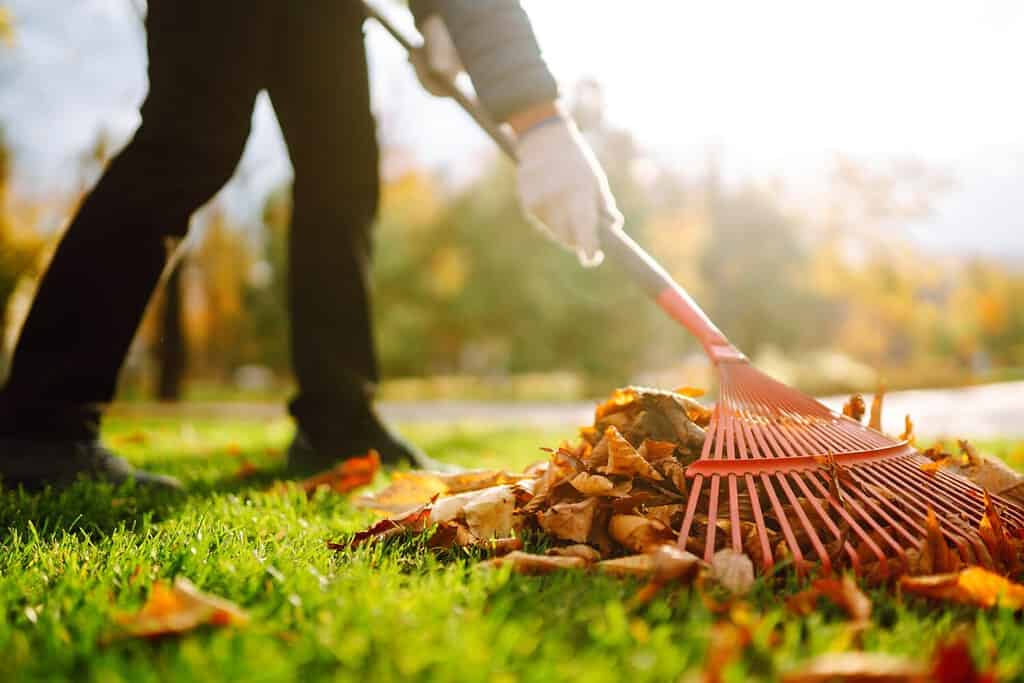
One of the few benefits of raking your yard is that it gets rid of fleas.
©maxbelchenko/Shutterstock.com
Fleas and other pests are kept out of your outdoor space by tending to your garden. In locations with long grass, accumulated leaves, and twigs, insects flourish. During the growing season, you should cut your lawn once every seven days and dethatch your yard once every year.
If your yard requires watering, give it what it needs, but don’t overdo it because humidity attracts fleas. The earliest part of the morning is an ideal time to water your lawn. Every three to four days in the fall, use a mower to mulch, eliminate, or collect the fallen leaves.
Get rid of plant waste like dead branches, brush piles, and dried flowers. Patch any holes in the fence if the backyard is enclosed, and enclose the vegetable patch if you have one to keep animals from coming in for a feast.
Garbage cans should have tight-fitting lids on them to keep rodents out. Never leave waste or garbage outdoors in plastic bags as this would be heaven for fleas.
5. Use Diatomaceous Earth

Diatomaceous Earth takes one to four days to work.
©FotoHelin/Shutterstock.com
Another effective flea remedy for your outdoor space is diatomaceous earth. Simply cover your lawn with a thin layer of diatomaceous earth. One of the world’s most efficient insecticides is diatomaceous earth, or DE as it is more generally known.
It eliminates fleas rapidly and effectively and is non-toxic. Furthermore, diatomaceous earth prevents fleas from building up a resistance to it.
6. Have Plants That Repel Fleas
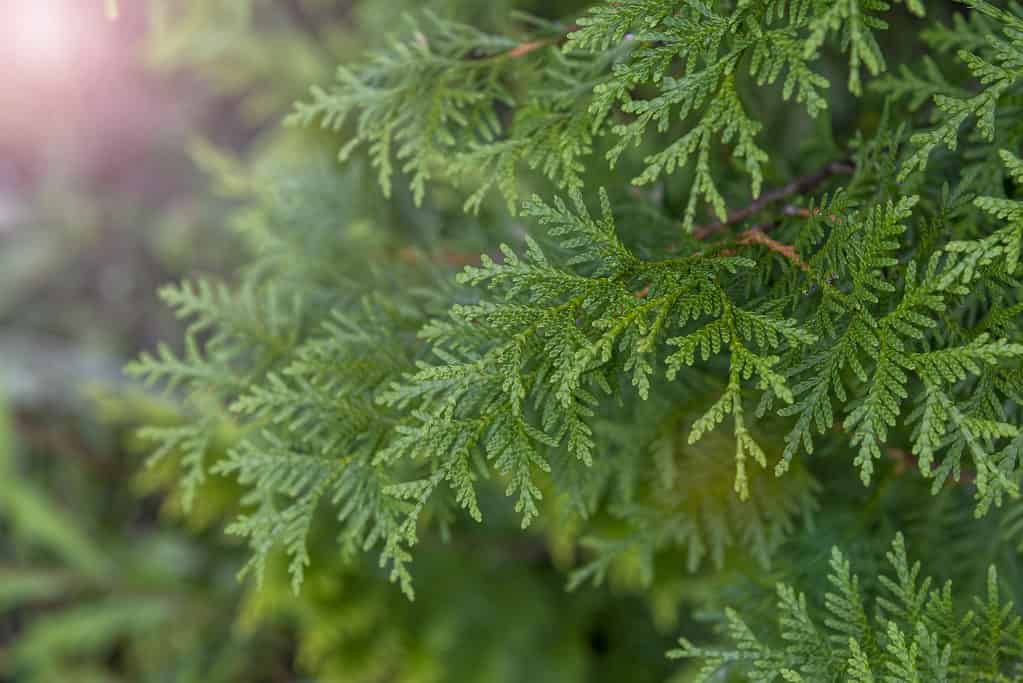
There are four true species of cedar trees.
©iStock.com/Andrey Rykov
Fleas can be kept out of your yard by planting a few particular plants in your gardens, around the perimeter of your yard, and close to your house. For anybody who struggles with a flea, tick, or ant infestation, cedar trees are a fantastic choice.
Most insects are repelled by the wood’s pungent smell. Given the popularity of cedar mulch, you might not even have to plant cedar to benefit from it. Next, with a name like Fleabane, you might anticipate that fleas will avoid this plant. This kind of plant is more often known by its common name, Pennyroyal.
Did you know that while citronella is well-recognized for keeping mosquitoes away, it also keeps fleas away? Next, catnip works just as well! Your pet’s favorite treat and a well-known all-natural flea repellant is catnip.
Simply scattering it throughout your yard will have a short-term impact. If you want something that is safe for pets and can prevent your cats from biting, we strongly advise planting catnip.
7. Essential Oils
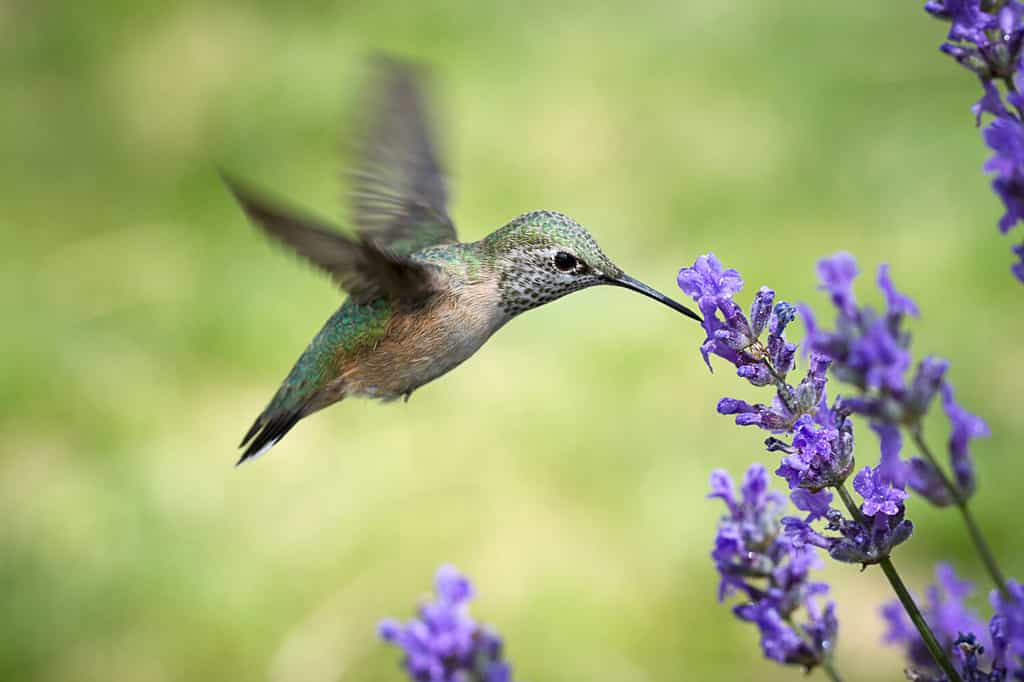
Lavender works to repel pests, while attracting beautiful creatures.
©Gregory Johnston/Shutterstock.com
It is reasonable to suggest that you ought to plant fresh lavender surrounding your home if you experience any kind of bug problem. This plant’s aroma is very aromatherapeutic and has the added benefit of keeping fleas away.
Eucalyptus is an additional plant that deters fleas. Not just fleas, but the majority of insects are deterred by eucalyptus. For you to plant this tree, though, you must ensure that there are no stray dogs or cats in your yard.
Although rosemary is frequently used as a herb, it also works incredibly well as a flea repellent. Actually, practically every major herb you have in your kitchen probably has some sort of flea-repelling qualities. This category includes herbs including sweet bay, chamomile, sage, and rosemary.
8. Call Professionals
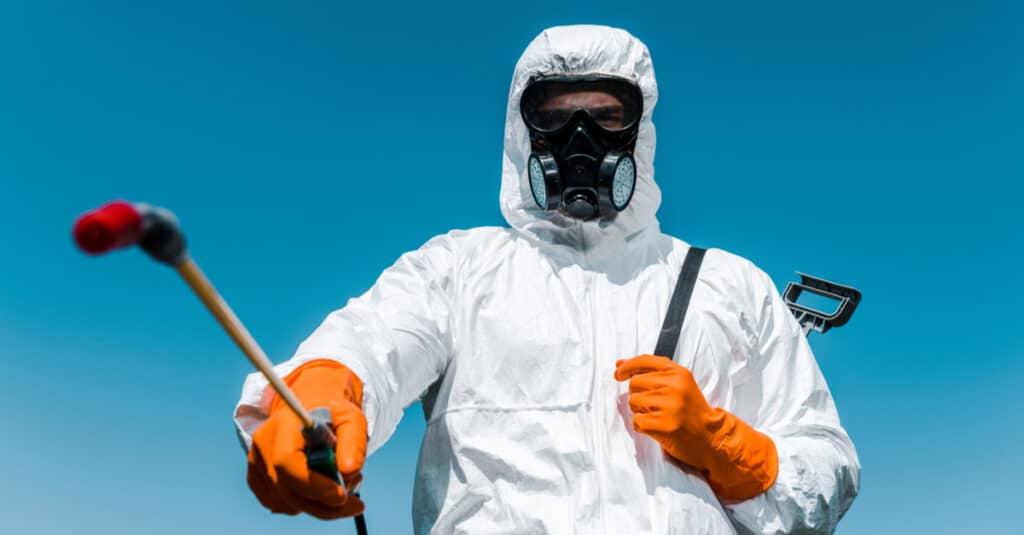
You can hire a company to do the work for you!
©LightField Studios/Shutterstock.com
In actuality, if you have fleas in your outdoor space, you probably also have other pests. Fortunately, these critters are rather simple to get rid of if you understand what to do. However, there are some circumstances that definitely imply that you need to call the exterminator.
It’s time to seek assistance if your flea infestation persists despite repeated applications of insecticide, meticulous lawn upkeep, and the planting of new flea-repelling plants. There’s no denying that no one likes to deal with a bug infestation in their yard.
By all means, hire somebody to handle it for you as long as you have the funds to do so.
Summary of Eliminating Fleas From Your Yard
- Spray Insecticides
- Flooding Your Yard
- Let Nematodes Do It For You
- Maintain Your Yard
- Use Diatomaceous Earth
- Grow Flea-Repelling Plants
- Essential Oils
- Call Professionals
The photo featured at the top of this post is © Vera Larina/Shutterstock.com
Thank you for reading! Have some feedback for us? Contact the AZ Animals editorial team.






